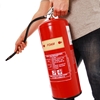
In 1911, 146 employees working at the Triangle Shirtwaist Factory in New York's Greenwich Village were killed in a factory fire. March 25 marks the 102-year anniversary of the fire considered one of the worst industrial disasters since the beginning of the Industrial Revolution.
People still gather to remember the tragedy at the garment factory run by Triangle Waist Company, which could have very much been prevented if there were proper safety measures taken to protect the workers.
Many of the employees working in the factory were young Italian and European Jewish immigrant women as young as 14-years-old working for low wages, long hours and in dangerous conditions. The women were preparing to go home at the time the fire broke out on the eighth floor of the Brown Building. The factory was engulfed in flames in a few minutes and burned for 30 minutes, according to CBS. At the time of the Triangle Shirtwaist Factory Fire, there were only 27 buckets of water available to aid in extinguishing a fire, not nearly enough to put out the flames so some of the women trapped in the factory jumped from the eighth, ninth and tenth floors in order to escape.
Some of the workers in the factory alleged the owners kept doors in the factory locked to prevent theft by workers, which led to an increase in worker fatalities during the fire. Others remained trapped in the factory and died from fire and smoke inhalation.
Legislative efforts to reduce worker injury and enact fire safety for factories
As a result of the fire, several worker safety reforms were brought about and labor codes across the country were updated. New models for safety regulations were also developed in New York and served as a larger model for other states around the country.
There was a lack of safety and hazardous working conditions at most factories for several years leading up to the tragic fire. Organizations including the National Women's Trade Union League, the National Consumers' League and the Association for American Labor Legislation played significant roles in improving factory conditions for workers.
The Bureau of Fire Prevention was formed in October 1911 by the New York state legislature after the Citizens' Committee for Public Safety, formed of 25 prominent city residents, addressed the need for safety regulations.
The New York Factory Investigative Commission wrote 36 new labor-related bills that were eventually adopted by the state's legislature. According to Cornell University's Industrial and Labor Relations School, local government agencies and unions developed additional fire safety measures and kept a close watch on factory conditions throughout the city.
The New York City Board of Aldermen passed the Municipal Building Code which requires safety devices such as fireproof materials, stairwells, fire alarms, extinguishers and hoses. These rules have transformed the factory workplace as employers continue to abide the building code.
The New York Factory Investigating Commission, established after the fire, created the Fire Prevention division of the New York City Fire Department, according to the U.S. Department of Labor.
Fires can still erupt in factories but with proper safety equipment including an industrial fire alarm, employers can prevent worker injury.
Industrial Safety News brought to you by Safety Systems Technology, Inc., leaders in fire and gas detection systems.